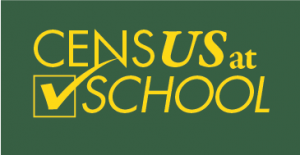ASA Census at School Program Exceeds 50,000 Students

The American Statistical Association’s U.S. Census at School program—a free international classroom project that engages students in grades 4–12 in statistical problem solving using their own real data—has exceeded the milestone of 50,000 students.
The program began in the United Kingdom in 2000 to promote statistical literacy in school children and has included participants from the UK, New Zealand, Australia, Canada, South Africa, Ireland, Japan, and the United States. The U.S. component of Census at School launched in 2010 and is hosted by the American Statistical Association. It has now reached 57,103 students with 2,119 registered teachers from all 50 states, plus the District of Columbia, Puerto Rico, the Virgin Islands, and Guam.
Census at School is a web-based project. Under the direction of his or her teacher, each student anonymously completes an online survey. Only the teacher can download the class census data via a password, though others can take random samples of other participating students. Together, the students analyze their class data and compare those results with results from random samples of other participating students.
Census at School New Zealand now hosts the random sampler for the international Census at School data, New Zealand data, and cleaned U.S. data. The online random sampler allows students and teachers to take random samples up to size 1,000 from the international, New Zealand, or U.S. database and either download the data or start up the free online iNZight Lite software with the data already loaded and ready for analysis. The international database includes data from Australia, Canada, New Zealand, the United Kingdom, and the United States.
U.S. Census at School also provides a random sampler to generate a sample from the entire messy U.S. database. Some teachers prefer to take samples of messy data to provide their students with practice cleaning and investigating uncleaned data. For other teachers, taking a random sample of clean U.S. data from the international random sampler makes the program more accessible for their students, especially in the younger grades.
For more information about the international random sampler, accessing cleaned U.S. data, or downloading data into iNZight Lite, read “Technology Insights” in Statistics Teacher.
The online survey consists of 13 questions common to children in every participating country and a few questions specific to children in each country. The common questions are related to measurement—length (height, arm span, foot length), travel time to school, reaction time to an online applet, time to complete an online memory test—and category—favorite sport or activity. The U.S. questionnaire has additional questions about text messaging, hours of sleep, technology usage, future plans, allergies and preferences (i.e., foods, music, school subject, their ideal super power). All questions lead to a variety of categorical and quantitative responses teachers can use in teaching statistics concepts and students can explore.
Students engage in statistical problem solving using Census at School by formulating questions that can be answered with the data, collecting and selecting the appropriate data, analyzing the data, and making appropriate conclusions in context.
The Census at School program is self-contained and includes detailed instructions, instructional webinars, a PowerPoint presentation, lesson plans, and other resources. Teachers comfortable with statistical concepts, problem solving, and data analysis can begin using the program in their classes immediately.
Getting Involved
The ASA is seeking champions to expand the U.S. Census at School program. Champions can be teachers who use the program in their classes or statisticians and statistics educators who assist teachers who are not yet comfortable with statistics and statistical problem solving. There are a variety of ways to get involved, including sharing information about the program with local schools, writing lesson plans, and teaching local workshops for teachers. For those interested in teaching local workshops, the ASA will provide materials.
The ASA also is building online Census at School resources and seeking those interested in writing new U.S. Census at School lesson plans or adapting international Census at School lesson plans for U.S. data. Those teaching grades 4–12 pre-service teachers might consider encouraging them to create lesson plans using U.S. Census at School data and submit them to the Statistics Education Web (STEW), an online bank of peer-reviewed lesson plans for K–12 teachers.
STEW lesson plans relating to Census at School will be published on the Census at School website in the resources area. Lessons or potentially related articles also may be published in Statistics Teacher, an online journal published by the ASA/NCTM Joint Committee on Curriculum in Statistics and Probability for Grades K–12.
Educators teaching or advising undergraduate or graduate statistics students might consider encouraging or requiring them to get involved in service learning by working with grades 4–12 teachers and students to incorporate Census at School and enhance their statistical problem-solving skills.
Other ideas to enhance and expand the program are welcome. Contact Rebecca Nichols, ASA director of education, about these or any efforts regarding service learning or other activities.

















